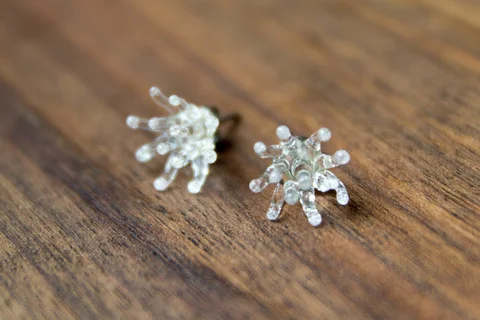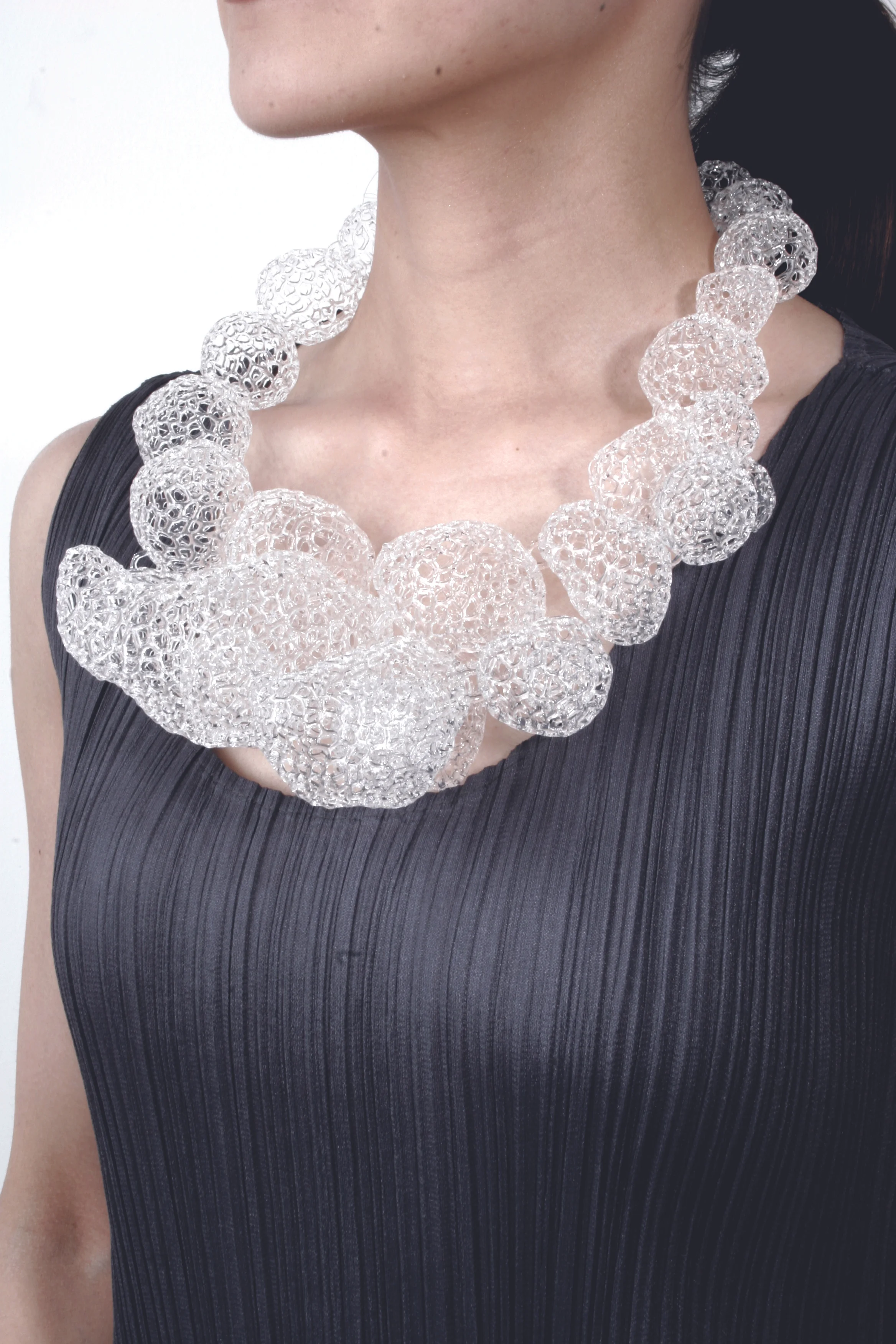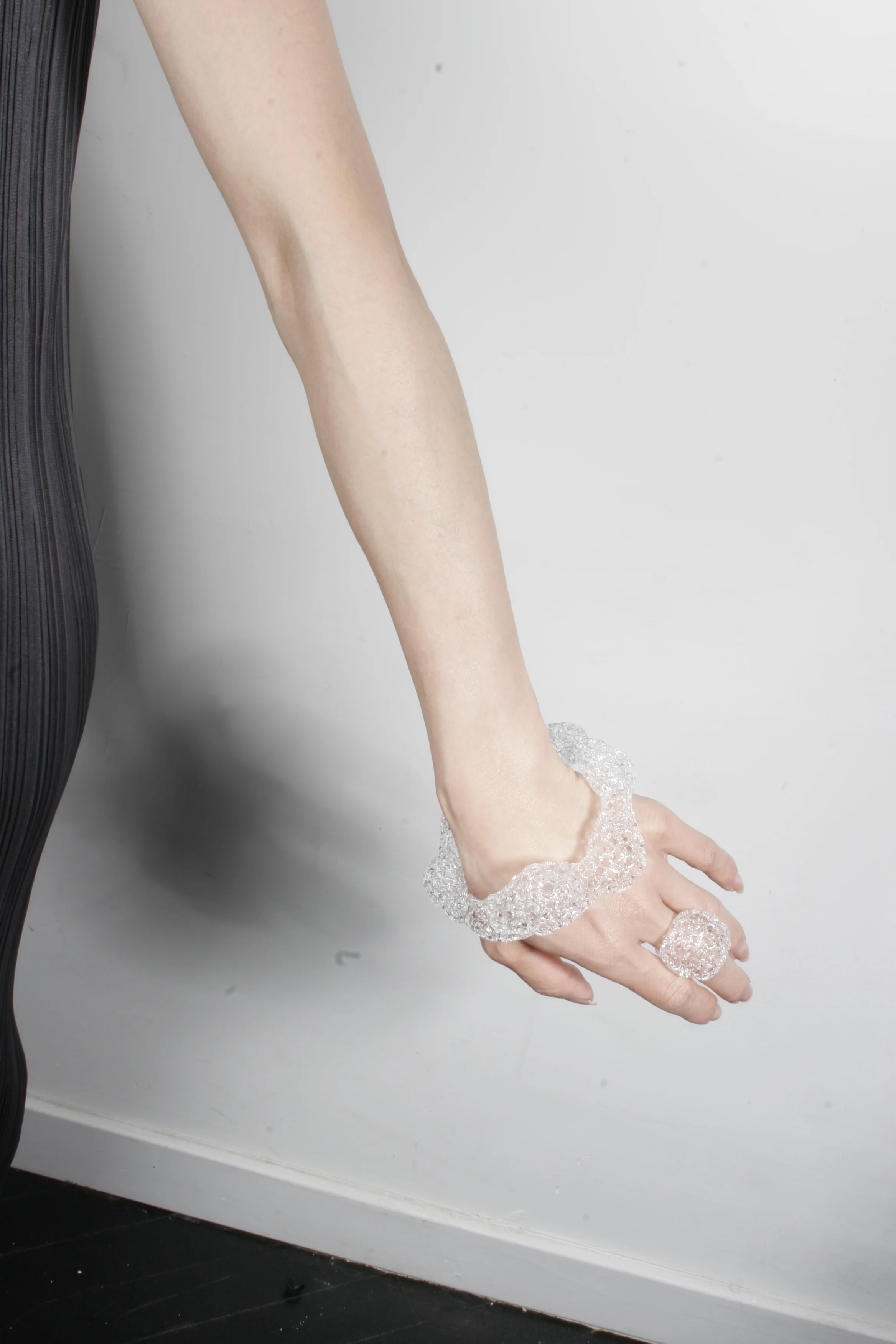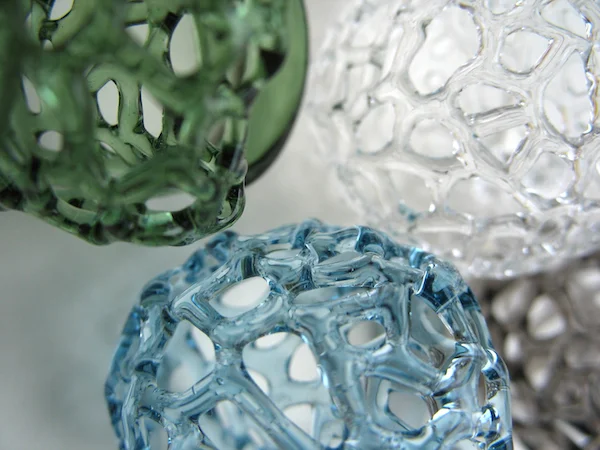Q & A with Yoko Yano
Yoko Yano makes glossy, translucent glass objects that would be at home in an art gallery or museum, but we’re happy to wear these statement-making pieces on our fingers. Inspired by the ephemeral quality of nature, this Japanese artist's luminous work is characterized by subtle jewel tones and organic forms reminiscent of ocean life.
Without using casting or molding, Yano is able to coax glass into intricate mesh shapes through a process of heating and weaving it into interlocking forms. All of her pieces are handcrafted in her Nagoya, Japan, studio where she continues to expand her collection from jewelry to lampshades.
Don’t let the delicate appearance of her jewelry fool you––Yano uses borosilicate glass in her work. It’s the same glass used in test tubes and pyrex cookware which is significantly tougher than common glass. This high quality glass controls the clarity and durability of the ring and is extremely lightweight.
We came across Yano’s work nine to ten years ago in Japan when she was fresh out of graduate school. After attending the Tokyo International Glass School in 2002, she was awarded the Itami International Craft Exhibition Jewelry Prize in 2003. Yano lives and works in Nagoya and balances her studio time with showcasing her work in contemporary art and design exhibitions. You can find her work in museum stores around the world and in our shop. Yano was kind enough to answer a few questions for us:
Why did you choose to work with glass instead of other materials?
When I was a child, I liked and often read books about making glass. Then when it came time to choose what I wanted to do with my life, I fortuitously learned about a glass vocational school. I remembered the books I used to read, decided that I’d like to learn this trade and entered the school.
So the reason may be less about glass as a material than being fascinated by the marvel that is making it. The nature of making glass, involving going back and forth from liquid to solid states, makes dealing with it very enjoyable. Also, the glass that I use is a special [laboratory-quality] kind and I think it’s a material that matches my personality.
How long have you been making glassware?
About 13 years.
Do you feel that your style or anything else has changed since you first started?
There haven’t been many changes in my style itself. I don’t use a mold or pattern, so each individual piece has a slightly different character, even when I’m making several of the same kind.
Are there any things that you made when you first started that you aren’t making anymore? The trade-off for making lots of new items is that there are things I stop making. I may have stopped making things in hues that are not fitting for glass.
When you are developing a new product, do you make sketches?
I draw light images sketches.
How has living in Nagoya (a smaller city than Tokyo or Osaka) influenced your work?
Pro: My work doesn’t need much large-scale equipment, but I think it would be hard to reserve the same kind of workspace I have in a metropolis like Tokyo. And because it’s almost exactly in the center of Japan, travel in any direction is comparatively easy.
Con: I don’t especially think there are any. If I had to name one, it would be that it’s an area without a lot of concern for new culture, so my exhibitions and work don’t get around much.





